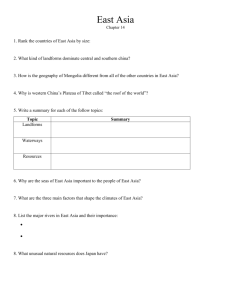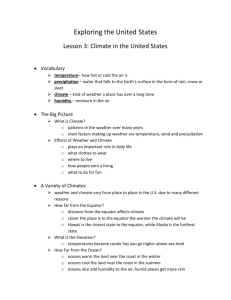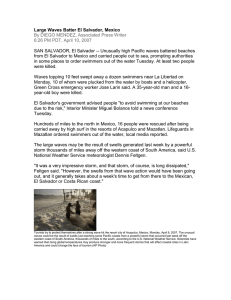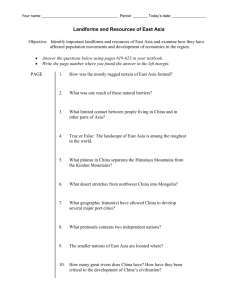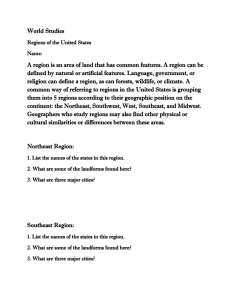Living in North America Pages 13-20
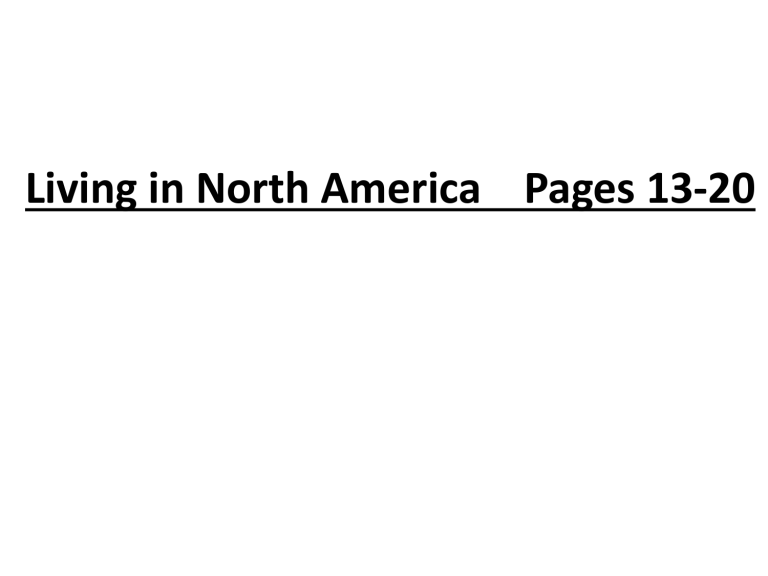
Living in North America Pages 13-20
Vocabulary
-Climate-the kind of weather a place has over a period of time.
-Population density- how many people there are in a given area?
-Rural and urban are antonyms, therefore they have opposite meanings
-Rural –country
-Urban-city
Climate Affects Ways of Life
Climate is different depending on location.
*Places near the equator such as Central America (Belize,
Honduras, Guatemala, El Salvador, Nicaragua, Costa Rica, and Panama) are warmer.
*Places farther from the equator such as Canada and the northern parts of the United States are cooler.
Climate affects
*What people wear
*What kind of houses they build
*The way they earn a living
Landforms Affect Ways of Life
*Landforms affects where people settle
*People settled on plains because of the flat land.
*People avoid mountainous areas and marshlands
*Landforms affects what people do for fun
Living Near Bodies of Water
*Help people meet their needs
*Provide transportation routes
*It helps countries connect to other parts of the world.
*Vancouver in Canada, Seattle in the United States, and
Panama City in Panama are all on the Pacific Ocean
*Canada’s largest city is Toronto and it is on Lake Ontario
*United State largest city is New York City and it is where the
Hudson River flows into the Atlantic Ocean.
*Lakes make it easier for businesses to ship their goods.
Resources Affects Ways of Life
*Natural resources affect where people settle.
*Early people settled where they could gather fruit, nuts, and hunt.
*People later settled where soil was good to farm.
*Natural resources have an effect on people’s way of life
*People along the coast fish for a living
*Off the coast of Mexico and southern part of the U. S., people drill for oil beneath the Gulf of Mexico.
*The oil industry provide jobs
Soil is another important resource in North America
People farm in the Interior Plains
Population in North American
*Climate, bodies of water, natural resources, and landforms affect population distribution.
*Different places have different population density (avg. # of people in area usually 1 square mile).
Urban and Rural Areas
*Most large urban areas are located along the coast of North America.
*Chicago is one of the largest cities and is located on Lake Michigan
*Lake Michigan is fresh water and a shipping route.
*Mexico City, North America’s largest city is located inland on the
Mexican Plateau
*San Salvador is El Salvador is one of the largest cities in Central
America, located in a valley inland from the Pacific coast.
The land is flat and very fertile.
Acelhuate River provides San Salvador with fresh water for drinking and growing crops.

